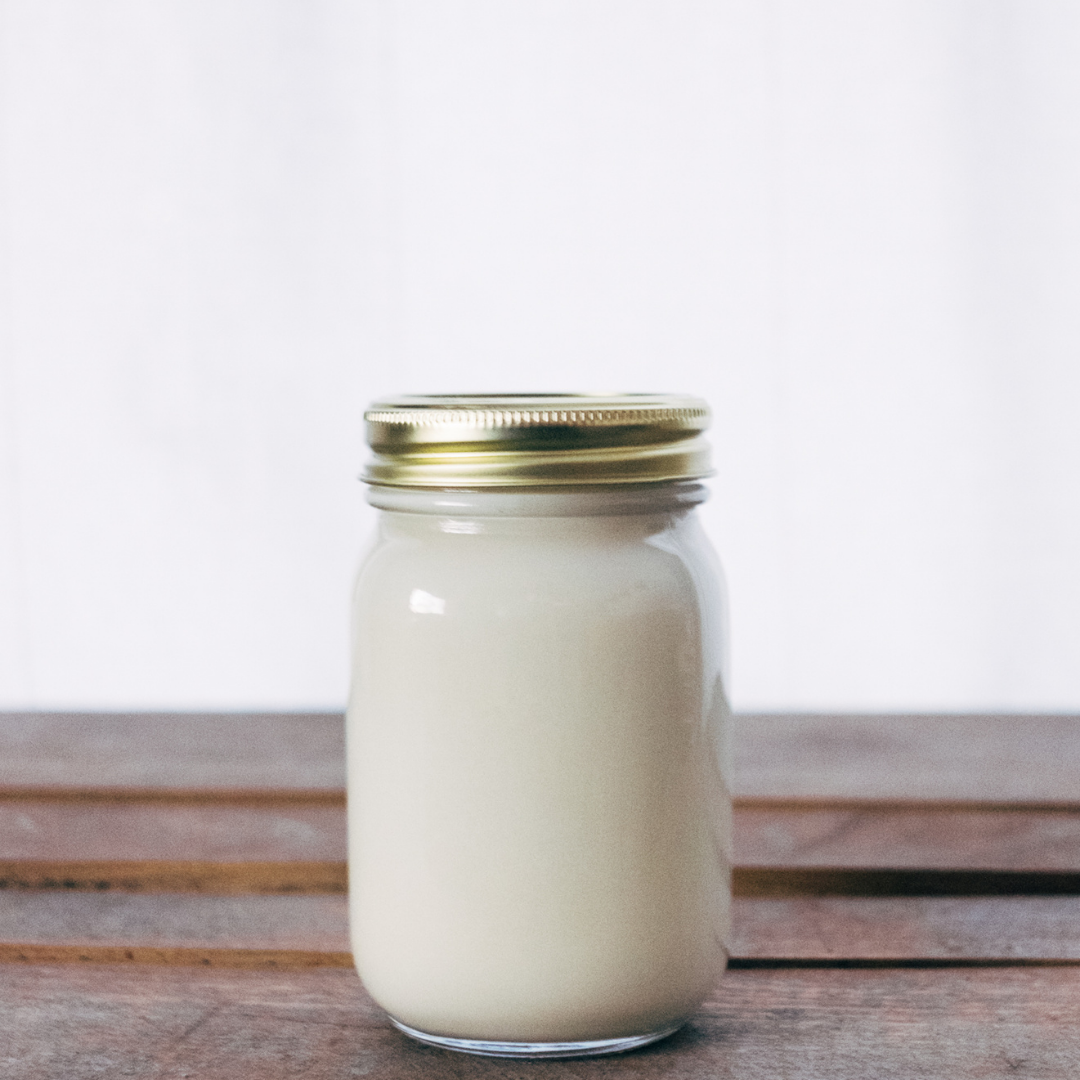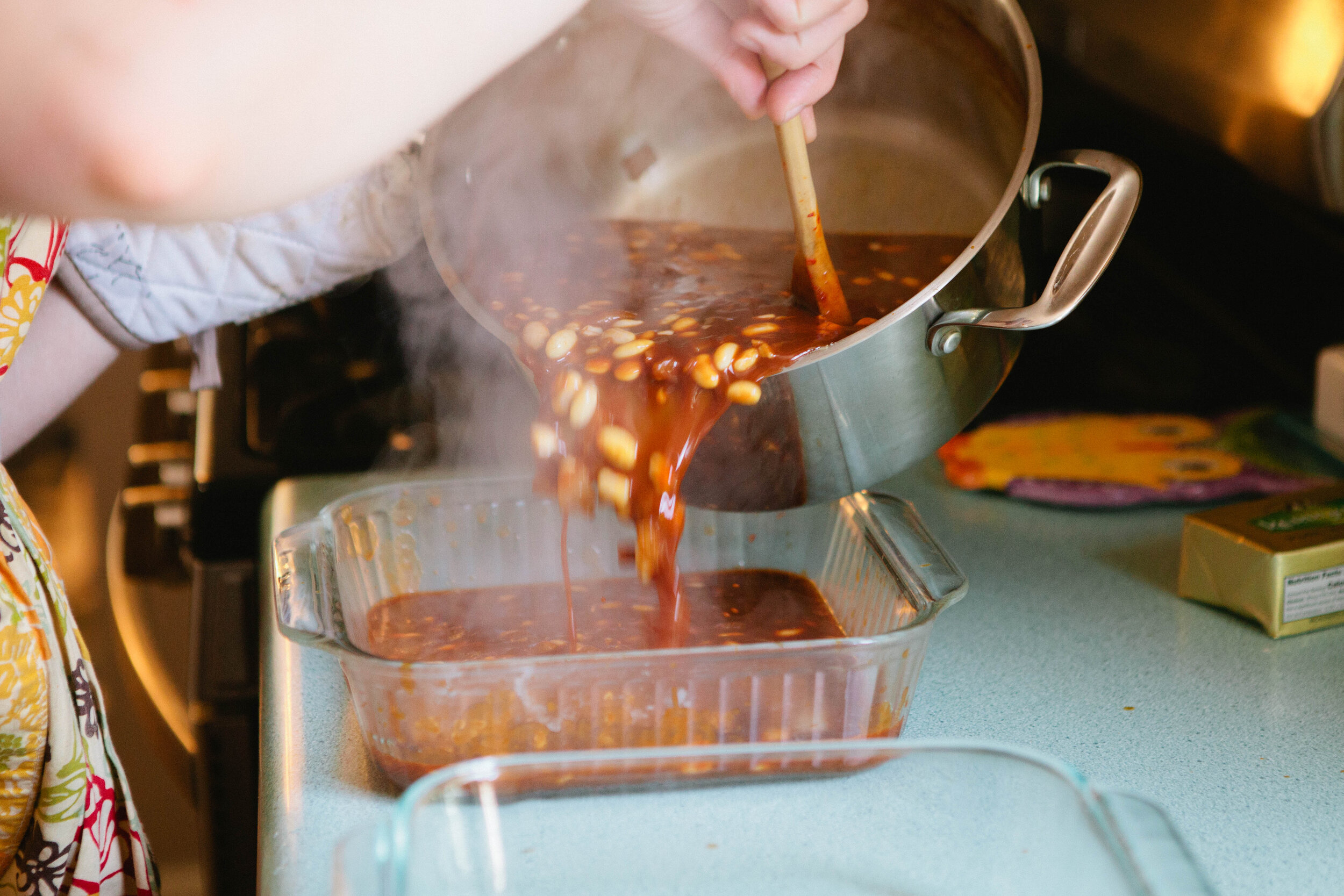Baked beans are a summer staple! But traditional canned beans are full of sugar and can have MSG. They can also cause flatulence because they are not sprouted. These baked beans are sprouted for maximum nutrition. This recipe also uses real ingredients for a full flavor baked bean! Unlike traditional baked beans, there’s no processed sugars.
These beans are not GAPS legal because of the molasses and maple syrup. They are however gluten and dairy free. These are based on the Nourishing Traditions recipe by Sally Fallon. I wanted to try this recipe as is but I think it would also be delicious to fry bacon and peppers alongside the onions to add into the bean mixture.
This recipe takes a lot of time to make - like two days time! It doesn’t require a lot of active time in the kitchen, however you do need to plan ahead for when you want to enjoy them.
Serve these beans alongside other summer favorites, like barbecue meats or mayo-free deviled eggs for a Real Food BBQ!
Ingredients for Sprouted Baked Beans:
4 cups navy beans, sprouted
½ cup lard or butter
1 onion
3 cloves of Garlic
Filtered Water
1 7 oz can of tomato paste
3 tbsp naturally fermented soy sauce
3 tbsp vinegar
¼ cup maple syrup
¼ cup molasses
1 tsp Sea Salt
Directions for Sprouted Baked Beans:
24 hours before, soak the beans in filtered water. Rinse every 12 hours until they grow sprouts.
Bring a large pot of water to boil on the stove. You want to add enough water to cover the beans.
Rinse the beans again, moving them in the water with your hand. You want to remove as many of the skins of the beans as you can.
Add butter or lard to a large cast iron pan. When melted, add in chopped onion.
Measure out 4 cups of sprouted beans into a large pot. If you have a large quantity of leftover beans that you have sprouted, I suggest freezing them as is in 2 or 4 cup increments OR making another bean recipe like refried beans or chili.
Add enough filtered water to cover the beans in the pot. Bring to a boil.
Skim the skins off the top of the beans as they float to the top. Preheat the oven to 350.
When the beans are boiling, add in the remaining ingredients.
If your large pot is not oven safe, place your beans in a large oven safe dish. Or if you’re like me and can’t find your large oven safe dish, two smaller ones are fine.
Place the beans in the oven for about 6 hours.
In Colorado, I had to stir and add about a half to a full pint of water to the beans every hour. Make sure you watch them so they don’t burn to the bottom of the pan. These take a lot of water!
After about six hours or when the beans are soft, take them out of the oven and enjoy!
Ingredients:
- 4 cups navy beans, sprouted
- ½ cup lard or butter
- 1 onion
- 3 cloves of Garlic
- Filtered Water
- 1 7 oz can of tomato paste
- 3 tbsp naturally fermented soy sauce
- 3 tbsp vinegar
- ¼ cup maple syrup
- ¼ cup molasses
- 1 tsp Sea Salt
Instructions:
- 24 hours before, soak the beans in filtered water. Rinse every 12 hours until they grow sprouts.
- Bring a large pot of water to boil on the stove. You want to add enough water to cover the beans.
- Rinse the beans again, moving them in the water with your hand. You want to remove as many of the skins of the beans as you can.
- Add butter or lard to a large cast iron pan. When melted, add in chopped onion.
- Measure out 4 cups of sprouted beans into a large pot. If you have a large quantity of leftover beans that you have sprouted, I suggest freezing them as is in 2 or 4 cup increments OR making another bean recipe like refried beans or chili.
- Add enough filtered water to cover the beans in the pot. Bring to a boil.
- Skim the skins off the top of the beans as they float to the top. Preheat the oven to 350.
- When the beans are boiling, add in the remaining ingredients.
- If your large pot is not oven safe, place your beans in a large oven safe dish. Or if you’re like me and can’t find your large oven safe dish, two smaller ones are fine.
- Place the beans in the oven for about 6 hours.
- In Colorado, I had to stir and add about a half to a full pint of water to the beans every hour. Make sure you watch them so they don’t burn to the bottom of the pan.
- After about six hours or when the beans are soft, take them out of the oven and enjoy!













